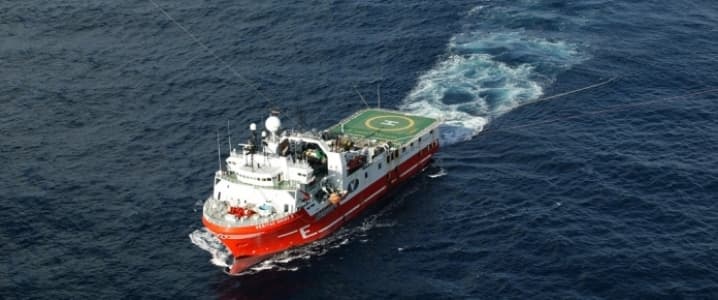The exploration and production business has been bearing the brunt of slashed investment and reduced budgets in the wake of the oil price crash. Yet, another industry dependent on E&P expenditure has taken even more of a beating: seismic surveying.
The seismic market has not only suffered the reduced exploration allocation, it has been piling huge levels of debt and is unable to flip more return on investment because spending cuts in exploration budgets have left them with less funding prior to completing a seismic survey job. Struggling E&P companies have been renegotiating seismic vessel rates, and many geophysical survey companies have been scrambling to cover their own costs.
It was in December 2014 - a few months after the oil prices started crumbling - that Schlumberger (NYSE:SLB) said it was reducing its WesternGeco marine seismic fleet to lower operating costs in response to the price crash.
But according to CGG (NYSE:CGG) chief executive Jean-Georges Malcor, “the last good year” for the seismic industry was 2012, E&P Hart Energy reports, quoting the manager’s speech at a London conference in November. Since 2012, the seismic market has declined by 60 percent, Malcor said.
“Traditionally the seismic market would represent between 2% and 3% of the global E&P spending. Now it is clearly below 1% since all of our customers massively cut their E&P spending,” Malcor said, as quoted by E&P.
Last week, CGG said in its trading and financial strategy update that it expected the market to remain very difficult in 2017, which would weigh on its revenues. The company sees its debt of $2.315 billion as at end-December as “too high” and plans to start discussions on a financial restructuring. Related: The Next Big Innovation In Oil & Gas: Cloud Computing
Another geophysical survey provider, Norway-based TGS, said earlier this week that its fourth-quarter sales showed “the seasonality and ongoing volatility in seismic demand in a market where E&P spending is expected to remain under pressure into 2017”.
Regarding exploration spending this year, energy consultancy Wood Mackenzie expects that total investment would at best match the 2016 spend of around US$40 billion, and may yet fall further. WoodMac expects exploration to return to profitability in 2017 after five years of only single-digit returns, with smarter portfolio choices and lowered costs.
So exploration is now focused on streamlining costs and regaining profitability rather than on spending on seismic surveys, at least not this year.
CGG’s Malcor expects the seismic industry to recover at some point, given that 60 percent of oil output in 2035 is expected to come from new discoveries rather than existing fields. But it’s not yet certain when this upturn would come for the seismic market. Related: Oil Oversupply Fears Return
As far as the offshore seismic industry is concerned, London-based market research company Technavio has estimated the value of the global offshore oil and gas seismic equipment and acquisitions market at US$4.5 billion in 2021, compared to US$3.1 billion for 2016. The key drivers would be reduced exploration risks, with 3D seismic surveys increasing drilling success rate by 88 percent. Still, by 2020, the 2D seismic surveys would still dominate the global offshore market with a 45-percent share. In three years, the Americas would be the largest offshore seismic market with a 68-percent share, Technavio said in a report from December 2016.
The seismic market will recover, but not before E&P spending resumes its growth and companies venture into new discoveries as existing reserves are shrinking. What’s certain is that the seismic industry recovery will not come this year or next; before the sector can emerge from the downturn, it most adopt a new way of doing business. As CGG’s Malcor said, the seismic industry needs to shift from a purely procurement approach to a model involving more cooperation and partnership.
ADVERTISEMENT
By Tsvetana Paraskova for Oilprice.com
More Top Reads From Oilprice.com:
- Oil Majors Prepare For Mega Tender In Lebanese Levant Basin
- Oil Prices Fall As Markets Question OPEC Cuts
- China Launches A $361 Billion Secret Takeover... In Renewable Energy


















